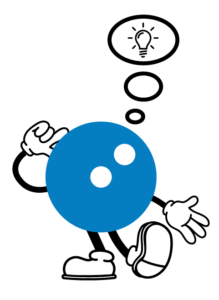By: Nicole Leuci Gilmer
Picture this: You’re a teacher in an elementary or primary school and you have your students outside on a warm and breezy day. They run around in the grass, playing with the school’s set of Big Blue Blocks. You watch as a trio of students start a riveting game of The Floor is Lava, hopping from the Long Block to the Clover Gear Block, balancing to stay out of the magma. Another group of students are trying to figure out how to stack a tower taller than any of them, when suddenly, the stack of lightweight Big Blocks comes toppling down. You hear a couple of grumbles and groans, but the group quickly gets back to work with a new strategy to re-enforce the base so that the tower has a stronger foundation.
As an adult, this may seem like an activity that is old as time – stacking, falls down, repeat. But below the surface, this classic form of play paired with life-size Blocks and enthusiastic kiddos is the perfect formula for social development among young children. For kids, this toppling tower goes beyond mere stacking and play. This tower encourages…

Collaborative Play: One of the most significant social benefits of block play is its tendency to encourage children to work together. They must discuss and agree on the design, delegate tasks, and cooperate to see their joint vision come to life. As a result, they learn valuable lessons in teamwork and social interaction.

Communication Skills: As children negotiate (or maybe sometimes argue) how they feel the tower should be re-built, they are also developing vital communication skills. The group must decide the role each builder plays within the stacking process. They cannot all fight to put the final Block up top or else they may cause the tower to topple once more. This process requires them to articulate their ideas, listen to others, and adjust their plans accordingly, thereby enhancing their language and conversational abilities.

Emotional Intelligence: As children interact with their peers, they also gain emotional intelligence. For example, when the tower accidentally gets knocked over by a peer passing by in their intense game of The Floor is Lava, it creates an opportunity to learn about forgiveness and resilience while the peer learns about empathy and making amends.
 Problem-solving and Conflict Resolution: Block play often involves some degree of problem-solving. Children learn to work through challenges, such as balancing structures or fitting pieces together. Considering this toppling tower, the children must analyze the problem, explore different solutions, and agree on the best way to build a more stable tower. Dependent on the age group and personalities involved, this may lead to disagreements, which then provides opportunities to foster their problem-solving skills and patience.
Problem-solving and Conflict Resolution: Block play often involves some degree of problem-solving. Children learn to work through challenges, such as balancing structures or fitting pieces together. Considering this toppling tower, the children must analyze the problem, explore different solutions, and agree on the best way to build a more stable tower. Dependent on the age group and personalities involved, this may lead to disagreements, which then provides opportunities to foster their problem-solving skills and patience.
Imagination Playground’s Big Blue Blocks go beyond being just a versatile play material – they are the perfect tool for encouraging social development, along with physical, mental, and emotional development.
In conclusion, the social benefits of block play are manifold. It’s a powerful tool that helps children develop collaboration, communication, problem-solving skills, and emotional intelligence. As educators and parents, it’s our joy and responsibility to provide these opportunities for growth through playful learning. Let’s build a better future, one Big Blue Block at a time.
Sincerely,
A proponent of play






